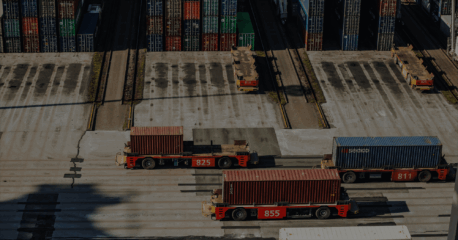At Sayari, we are constantly communicating with government teams across various departments, including at the Treasury, Commerce, and Defense to name a few. In these conversations, we’ve noticed several common themes and challenges that come up time and time again. This blog post is part of a series where we will answer the burning questions we hear most from government analysts and leaders.
The Department of Defense (DoD) relies on a global network of over 200,000 suppliers to produce weapons and noncombat goods like batteries and manufacturing equipment. Agency procurement teams face a huge challenge in gaining visibility to confidently answer: Are our supply chains over-reliant on foreign adversaries?
A lack of insight beyond tier 1 suppliers has real impacts on U.S. national and economic security. This blog post outlines the challenges faced by analysts working to uncover foreign adversaries in their supply chains and illustrates how technology can be used to offer n-tier supply chain visibility.
>> Learn techniques to identify FEOC presence in supply chains <<
Supply Chain Security: A New Front in Economic and National Security
The DoD considers reliance on foreign sources for items it procures a national security risk. President Trump has prioritized American economic security through his focus on trade policy, further cementing the saying from the first Trump administration: ”economic security is national security.”
To protect U.S. economic and national security, government agencies must secure their supply chains against a reliance on adversaries. Lack of insight into lower tiers hampers identification of foreign adversaries, resulting in the potential for supply disruption, espionage and sabotage, and impact to supply chain resiliency during a conflict or crisis. Since the COVID pandemic, the government has taken steps to strengthen both government and commercial supply chains.
Past administrations’ efforts, such as the 2022 CHIPS and Science Act and the 2021 Infrastructure Investment and Jobs Act (IIJA), attempted to address decades of offshoring that resulted in structural vulnerabilities in critical U.S. supply chains. More recently, the proposed “Promoting Resilient Supply Chains Act of 2025” Senate bill aims to formalize supply chain resilience efforts within the Department of Commerce and create a Supply Chain Resilience Working Group to map, assess, and model critical supply chains, with a specific focus on gaps and vulnerabilities in key industries.
The Government Accountability Office (GAO) believes that work is still needed to strengthen government supply chains. In a July 2025 report, Defense Industrial Base: Actions Needed to Address Risks Posed by Dependence on Foreign Suppliers, the GAO stated that while the DoD has made progress on supply chain transparency, it still has limited visibility into its lower-tier suppliers.
Achieving more visibility across the complete supply chain is challenging work. Opaque and multi-tiered networks make it difficult to trace country of origin and ownership by foreign state-sponsored actors. There is often limited data sharing between government agencies, and government procurement processes are still transitioning from a decades-long focus on prioritizing cost and efficiency to placing more focus on national and economic security.
Meanwhile, new mandates like the NDAA amendment, which calls for deeper scrutiny of
agency partners for ties to foreign intelligence, add to the challenge and effort for procurement teams. Responding to hidden risk within a global supply chain requires moving beyond supplier-provided disclosures and manual investigations to harness technology that drives more efficient and deeper supply chain visibility.
>> Discover how Sayari enhances vendor vetting to identify foreign ownership risks <<
Sayari: The Solution for Supply Chain Transparency
Sayari’s comprehensive corporate records provide the essential intelligence layer that empowers investigators to rapidly identify foreign ownership and control within government supply chains.
Here’s how Sayari addresses the challenges procurement teams face to ensure government supply chains are free of foreign adversaries:
- For Defense Supply Chain Security: External trade data, such as that provided by Sayari’s 78+ unique trade data sources, allows analysts to identify and screen sub-tier suppliers for risks that could disrupt or otherwise compromise defense supply chains. Sayari data offers a far more comprehensive view of an entire supply chain than relying solely on direct suppliers’ disclosures or questionnaires.
- For Unmasking Hidden Ownership: Sayari delivers detailed insight into the control and ownership of suppliers by tracking ownership through multiple layers to identify beneficial owners regardless of the number of intermediaries. Sayari automatically flags companies controlled by entities sanctioned by the U.S., EU, UK, Australia, Japan, and Ukraine. Using Sayari, analysts can explore complex foreign linkages visually and annotate visualizations for more streamlined collaboration.
- For Vendor Threat Mitigation: Sayari helps safeguard sensitive programs with detailed insight into control and ownership of contractors and subcontractors. By supplementing internal procurement data with comprehensive corporate data on both existing and potential vendors, Sayari enhances vetting and helps to proactively mitigate risk.
Sayari is trusted by government teams to enable confident, clear-eyed sourcing and procurement decisions. To learn how your team can streamline investigations to rapidly identify foreign adversary presence in supply chains, request a personalized demo.



